Invisalign Clear Aligners – Lancaster, PA
A Straighter Smile Without the Hassle
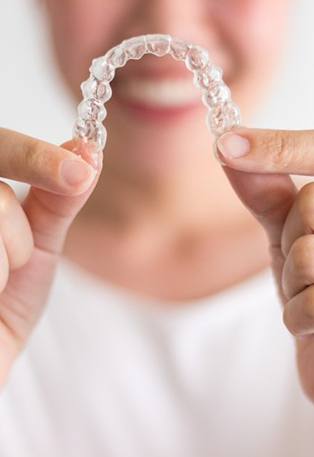
If you didn’t undergo orthodontic treatment when you were younger, you may think you’ve missed the boat on straightening your teeth. However, that couldn’t be further from the truth! You’ll be happy to know that you don’t have to rely on traditional braces to correct noticeable gaps and misalignment. At Dentistry for Life, we offer Invisalign as an alternative solution so you can maintain a confident appearance throughout your treatment. To find out if this orthodontic service is right for you, continue reading or give us a call today!
How Invisalign Works
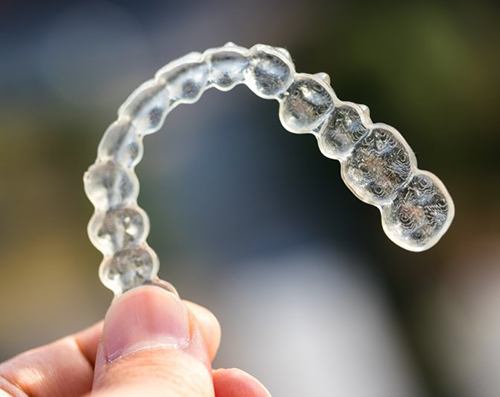
Unlike traditional braces, Invisalign uses a series of clear aligners to move your teeth into proper alignment. You’ll wear each set for at least 22 hours a day and they’ll shift a small section of your smile at a time until your pearly whites are in the desired position. Most patients are instructed to wear their set for two weeks before advancing to the next one. Throughout your treatment, you’ll visit our office regularly to ensure everything is moving according to plan.
Who Can Invisalign Help?
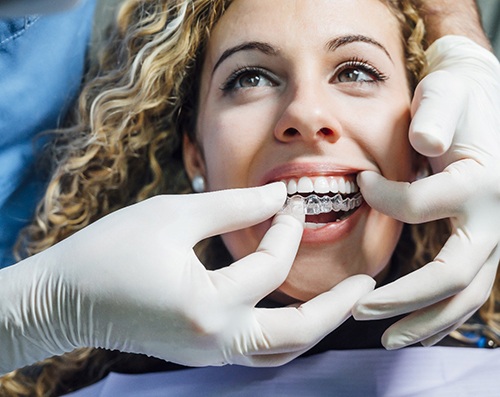
Invisalign has become one of the most popular orthodontic solutions because it can address multiple issues in a discreet and relatively quicker process. Not only can these trays straighten your pearly whites, but they can even help treat bite misalignment. Here are some of the most common problems Invisalign can help patients with.
Crowded Teeth
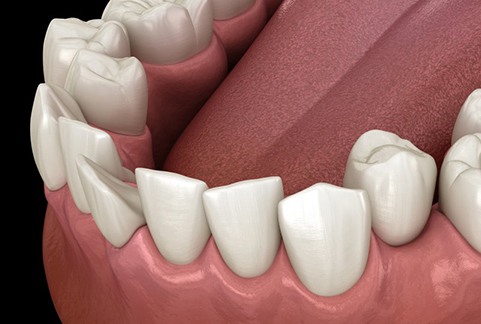
Do you feel like you have too many teeth in your mouth? If so, you may have crowding issues. This must be addressed as soon as possible as it can interfere with your cleaning routine and increase your risk of issues like decay and gum disease. With Invisalign, your aligners can shift your teeth into a more ideal position.
Gaps Between Teeth
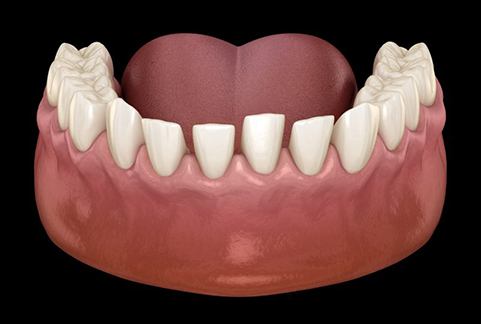
Having gaps in your teeth doesn’t just feel unappealing – they can make you more susceptible to cavities and infection. That’s because food particles can get stuck in the spaces between your teeth, leading to decay and bad breath. Luckily, Invisalign can push your teeth closer together into a healthier position.
Overbite

Also known as an overjet, this is when the upper arch of teeth juts further away from the bottom teeth. Not only does this affect a person’s bite, but it can also lead to issues with speaking as well as jaw discomfort. Your teeth can also be vulnerable to injury since they lack protection and stability from aligning with the bottom arch. Invisalign, along with other attachments, can help gradually correct your bite for better oral health in the long run.
Underbite
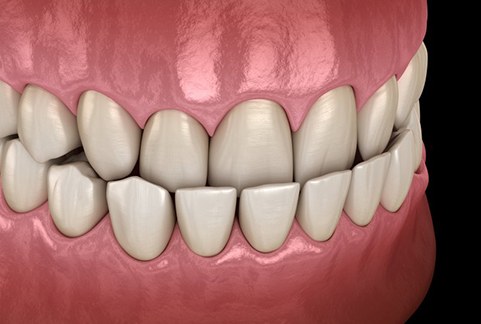
Opposite to an overbite, the lower arch protrudes away from the upper jaw, creating an uncomfortable bite alignment. This can be caused by several factors like oral habits, genetics, and physical trauma. Adults and younger patients alike can benefit from Invisalign to correct this issue.
Crossbite
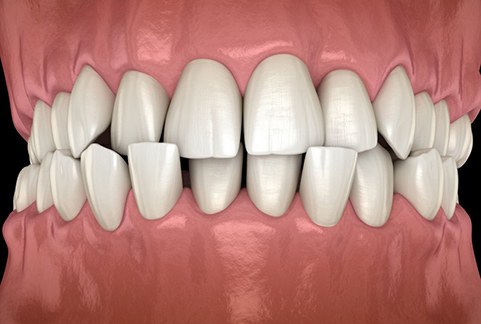
Whenever the upper and/or lower teeth are positioned slightly in front of each other, it’s known as a crossbite. This may be due to various reasons like poor oral habits, premature loss of baby teeth, and genetics. In many cases, Invisalign along with other accessories will be needed to adjust the jaw. Holding off on treatment can leave you susceptible to issues like tooth decay, gum disease, headaches, and jaw pain, as it’ll be more difficult to properly care for your teeth. Straightening your teeth with Invisalign can greatly benefit your long-term oral health.
Open Bite
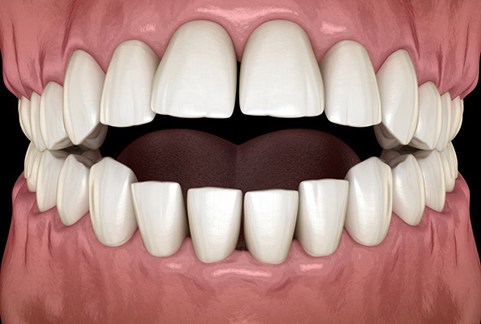
An open bite is when the top and bottom front teeth don’t touch each other even when biting down. People might develop this due to insufficient bone development or oral habits, such as thumb-sucking. This can lead to complications with chewing, enunciation, and an increased risk of enamel wear at the back of the mouth. With Invisalign, you can bring your upper and lower teeth closer together, reducing your risk of dental damage.
Benefits of Invisalign
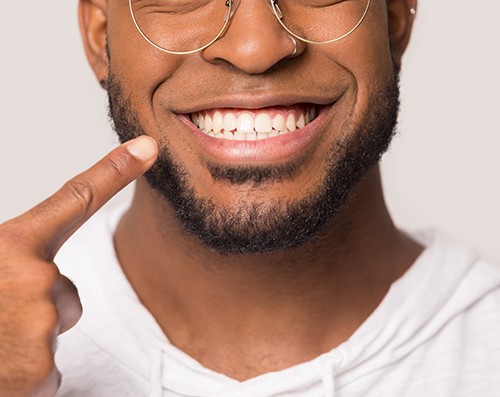
Thanks to advancements in the field of orthodontics, you are no longer limited to just traditional braces. Invisalign is a reliable, effective, and safe treatment that can deliver incredible results without the noticeable brackets and wires. If you are considering clear aligners for yourself, then you’ll be happy to learn that you can look forward to several incredible advantages:
Faster Average Treatment Timeline

If you don’t want to wait three years or more to achieve your dream smile, we have good news: you may not have to. After all, the average treatment timeline with Invisalign is only 12-18 months! So, if you have a wedding, a dream vacation, a family reunion, or another important event on the calendar, you should definitely consider clear aligner treatment.
Discreet Trays, Confident Smile

Of course, one of the biggest perks of Invisalign is that the aligners are metal-free. As a result, no unwanted attention will be drawn to your smile during the teeth-straightening process. Not only that, but the trays are removable, so you can take them out before going on a first date, taking a new passport photo, etc.
Easy Dental Care

Another perk of removable aligners: brushing and flossing are easy. First, remove your aligners, rinse them with clean, cool water, and store them safely. Then, complete your oral hygiene regimen as usual! In other words, you don’t have to worry about buying special dental care products or adopting a cumbersome oral hygiene regimen; keeping your smile healthy is easy.
No Dietary Restrictions

In an effort to prevent orthodontic emergencies, like a broken or loose bracket, patients with traditional braces are asked to adjust their diet. More specifically, they are asked to avoid crunchy and sticky foods, like tortilla chips, whole apples, and caramel-filled candies. That’s not the case for Invisalign patients. Since the aligners are removable, they can eat all of their favorite foods!
Fewer Check-In Appointments

With traditional braces, monthly adjustment appointments are needed to ensure continuous pressure is placed on your teeth. With Invisalign, you are given several sets of aligners at once. So, there isn’t a need for monthly visits! Typically, patients come in every 6-8 weeks, and their appointments are 20 minutes or less.
Improved Comfort

Last, but certainly not least, Invisalign is considerably more comfortable than traditional braces. This is largely because there aren’t any metal components. Instead, the aligners are crafted from smooth metal, which is custom-made to fit the contours of your mouth perfectly. So, you won’t have to worry about mouth sores, soft tissue irritation, and the like.
Understanding the Cost of Invisalign

Because Invisalign isn’t a one-size-fits-all treatment, it’s impossible to provide an accurate cost estimate until you come in for a consultation. During your appointment, our team will review your dental history and assess the extent of your dental misalignment before providing a price quote. Rest assured – we’ll also explain your financing options to help you avoid breaking the bank!
Factors That Affect the Cost of Invisalign
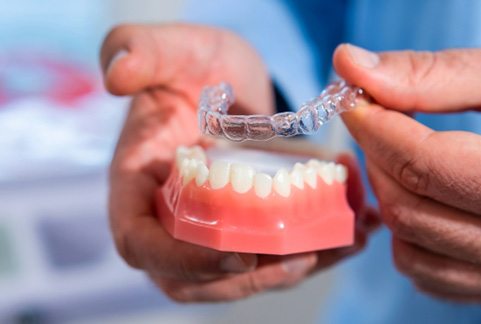
Not only is there no one-size-fits-all cost, but even general price ranges can be somewhat misleading. After all, every treatment plan is completely customized, and numerous factors need to be considered when determining the cost. That starts with the severity of your misalignment and how many trays you’ll need. However, those are just some examples of the upfront factors. Once you begin treatment, your compliance with the guidelines will also come into play. After all, if you don’t wear your aligners often enough, you’ll quickly fall off-track with your treatment plan, which could come with additional costs.
Invisalign vs. Smile Direct Club™: Which Costs More?
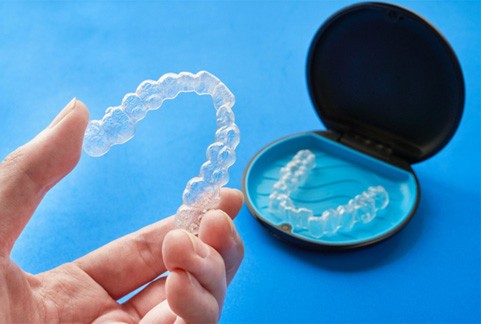
Smile Direct Club™ and other mail-order aligner companies have a starting price that’s much lower than Invisalign. With that said, they still aren’t worth your valuable money. In addition to professional organizations (like the American Dental Association) actively voicing their distaste, several patients have filed lawsuits because they experienced worsened misalignment and even serious dental emergencies, including fallen out teeth. Invisalign, on the other hand, has been reliably and safely helping patients for over 20 years now. So, although the upfront cost is higher, it’s worth the investment.
Does Dental Insurance Cover Invisalign?

Not always, it really depends on your specific dental plan. While some patients don’t have any orthodontic coverage, others have upwards of 50% of the cost covered. So, it’s worth giving your provider a call to see if you have benefits that can be used toward Invisalign! Of course, you can also give us a call since we welcome dental insurance, have experience working with many of the nation’s leading providers, and can file any necessary paperwork on your behalf.
Options for Making Invisalign Affordable
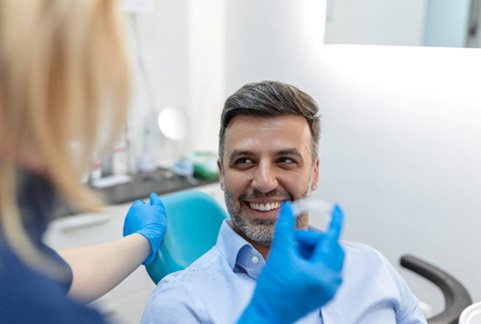
If you are uninsured, then you can make the cost of Invisalign more affordable with CareCredit! This is a trusted third-party financier that offers patients flexible payment plans. With a few clicks, you can sign up for one that suits your monthly budget, preventing you from having to stress about the price. If you have any questions about this financial solution, you’re more than welcome to give us a call – we’re here to help!
Invisalign FAQs

Does Invisalign Hurt?
Unlike traditional braces, Invisalign involves using smooth, custom plastic material to wear for trays instead of metal brackets and wires. This means you can expect a much smoother experience as well as less risk of irritation with your soft oral tissues. Of course, it’s natural to feel some soreness or discomfort when first wearing your Invisalign aligners. Fortunately, this should only be temporary, as your teeth will begin to feel more accustomed to the pressure of switching to the next set of trays. During your treatment process, feel free to take over-the-counter pain relievers as well as a cold compress to alleviate discomfort.
How Long Does Invisalign Take?
In the majority of cases, most patients take about 12 to 18 months to finish straightening their smiles with Invisalign. That said, the precise timeline for this treatment will be different for every person due to various factors, including the complexity of their alignment issues and their commitment to the process. Those with milder or simpler orthodontic problems might even expect to complete their treatment plan as soon as six months! Patients with more severe alignment issues may take around 18 months or more. Though this might sound like a long time, Invisalign is still four months quicker to completion compared to traditional braces.
What Are Invisalign Attachments?
When Invisalign was first introduced, the treatment was mostly reserved for those with milder cases of bite misalignment. Today, we can use attachments and buttons to help patients who are experiencing severe malocclusions and bite problems. Invisalign attachments are usually tiny bumps made out of composite resin that we can bond to your teeth, which will then allow your aligners to grip your teeth to guide them into better placement. Buttons, however, are designed to attach or anchor elastic bands so that they can help improve bite issues.
Can You Eat with Invisalign?
You should never try to eat anything while wearing your Invisalign trays. Not only can this cause issues like staining, discoloration, and potential damage to the aligners, but doing so can also increase the risk of delaying your treatment process, which can end up costing you more money. To avoid any complications, you’ll need to remove your trays before eating and drinking anything other than pure water. Placing too much pressure on the aligners can wear them down or even cause damage, making them nonfunctional for straightening your teeth. While eating, make sure to keep your Invisalign trays in a protective case or soak them in a cup of water to keep them bacteria-free. Brush and rinse them off before putting them back on.
